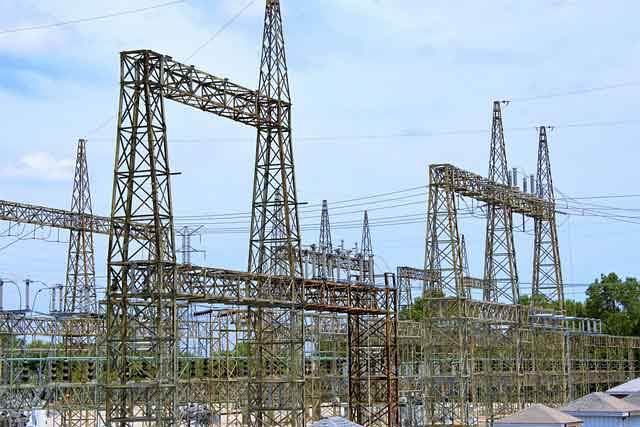Switchgrass good option for power generation
Switchgrass is a perennial grass native to much of the prairie. It grows extremely quickly, sometimes up to 2.2 metres tall. It grows on land not considered suitable for food crops, yielding about 15 to 20 tonnes per hectare. And, when dried, it burns very efficiently.
When the idea that this hardy, native plant could be a source of cellulose for biofuel emerged in the early 1990s, the media began to postulate that it wouldn't be long before Canadians would be relying on this former weed to solve their energy woes. No less an authority than David Suzuki wrote an essay called Fill 'Er Up With Switchgrass in which he indicated we'd all be filling our tanks with biofuel before long.
It was a ready-for-prime-time story: Here was a weed that grew in places not suitable for traditional food crops. It had already developed its own effective defences against insects — reducing the need for pesticides — as well as against drought, flood and poor soil. And it's a perennial, so you don't have to worry about planting it every year.
That switchgrass could be burned to make energy seemed like a modern-day miracle.
Fast-forward to today, and not only aren't Canadians filling up with switchgrass biofuel, it's not even being cultivated in any large way.
About 40 farms in Canada dedicate a mere 600 hectares to switchgrass, using it mainly for livestock bedding, a base for growing mushrooms, or in low-quality fibreboard.
The biggest grower of switchgrass for fuel receives not a penny of federal funding. Roger Samson, executive director of Resource Efficient Agriculture Production Canada (REAP), a non-profit research organization, said it's as though switchgrass was relegated to the scrap heap as an energy source.
"The federal government doesn't seem to want anything to do with switchgrass," said Samson. "They're betting taxpayer money on other fuel sources."
The federal government has dedicated $2.2 billion to biofuel research, of which $500 million has been earmarked for "next-generation" projects. That $500 million is administered by Sustainable Technology Development Canada (STDC), a not-for-profit foundation.
"We look at the viability of any fuel source as far as supply," said Patrice Breton, the STDC's director of communications. "We want to get beyond the food-versus-fuel debate, and have looked at things like wheat sheaves, corn husks, wood chips and even garbage as a viable energy feedstock."
But none of the research money has yet been handed out for projects like this.
"We put out the criteria, people apply, we go out and kick the tires and, potentially, fund the project," he said. "We launched in the fall and have one application we are considering."
That application is from Iogen, an Ottawa-based company that makes cellulose ethanol from farm leftovers, while producing essential enzymes used in paper manufacture and animal feed.
"We had lots of very interesting conversations," said Breton. "But only one viable application so far."
The problem, Samson said, is that the federal government seems fixated on using liquid fuels for energy, and that's not good for switchgrass — at least with our current technology. Making any plant material like switchgrass into a liquid fuel is a complex and difficult process.
"It takes up as much energy as it produces," said Samson.
University of Massachusetts-Amherst researchers George Huber, Torren Carlson and Tushar Vispute have managed to transform switchgrass and poplar trees — another non-food plant Canada has plenty of — into high-grade gasoline (rather than ethanol). Even so, they admit that a viable application of their feat is still at least a decade away.
"The challenge for chemical engineers is to efficiently produce liquid fuels from biomass while fitting into the existing infrastructure today," said Huber.
Samson has a different idea. Instead of burning fossil fuels to make switchgrass into a liquid, why not just burn the switchgrass?
At REAP's farm and research facility in Ste-Anne-de-Belleville, Quebec, they cut the switchgrass down in November, just before it snows, then harvest it in April after the snow has melted away. The winter dries the plant enough so that it just has to be compressed into fuel pellets.
Samson doesn't expect people to fill their gas tanks with pellets, but that's not his point.
"The biggest user of energy — and the biggest contributor of greenhouses gasses to the environment — in this country isn't transportation, it's thermal," he said, and renewable solid fuels could be used instead of non-renewable liquid heating fuels and gas. "Heating our houses and institutions with pellets would reduce fossil fuel use and greenhouse gas emissions in huge way."
According to a five-year study conducted by researchers at the University of Nebraska-Lincoln, switchgrass grown for biofuel production produced 540 per cent more energy than was needed to grow, harvest and process it.
"This clearly demonstrates that switchgrass is not only energy efficient, but can be used in a renewable biofuel economy to reduce reliance of fossil fuels, reduce greenhouse gas emissions and enhance rural economies," said Ken Vogel, a U.S. Department of Agriculture-Agricultural Research Service geneticist.
REAP's pellets, which look like green charcoal briquettes, can be used in the same applications as coal or natural gas, according to Samson. And they yield seven times as much energy per hectare of land as corn does.
And switchgrass as a heating fuel can be cheaper than natural gas.
"If a final pelleted price of $150 a tonne is considered, switchgrass pellets as source of energy would cost in the range of $7 to $8 per gigajoule," said Glenn Friesen, business development specialist for Manitoba Agriculture, Food and Rural Initiatives. "If a comparison energy source of natural gas is priced at $17 per cubic metre, then it has been estimated that an average homeowner would recoup the costs of a pellet stove purchase in three to four years (based on pellet stove price of approximately $3,000)."
Since the pellets can be burned as fuel by existing infrastructure, such as coal-fired power plants, Samson said that the liquefaction problem for automobiles is moot — if people switch to electric cars.
"It can be burned in a power plant to make electricity," he said. "So why not use that electricity to power vehicles?"
It's a scenario he sees as beneficial not just for the air in Central Canada, but also for the economy.
"Look at Ontario, their economy is in recession and they are importing coal from the U.S. and natural gas from Western Canada to make energy," he said. "And now the federal government wants them to use ethanol — when Ontario is also a net importer of corn; it doesn't make sense."
And the hardy plant could grow well in Ontario, where it occurs naturally in some places. "It can grow on marginal farmland, unfit for food crops," Samson said. "So it wouldn't compete with them."
He adds that he's had success farming switchgrass and other hardy native grasses in many different types of conditions. "Soil that's too wet, soil that's too dry, soil on an incline — none have been a problem. I went down to Mississippi after Hurricane Katrina and saw some switchgrass that had been under water for more than 30 days — it was fine."
Despite all that it has going for it, Samson said that the federal government just isn't interested in switchgrass. He says he is still waiting for the government or STDC to recognize switchgrass as a solid fuel alternative.
Gary Kellar, spokesman for the federal Ministry of Energy, points out that conventional ethanol and biodiesel represent the first generation of biofuel. "We're big on the next generation of biofuels. Cellulosic ethanol - fuel made from farm products not used as food — is what we see as that next generation."
Samson and other switchgrass supporters agree - and they would like to see that approach put into action in Canada now.
"Instead of exploring alternatives, they (the Canadian government) are trying to pick winners," Samson said. "And if they are going with things like coal and corn ethanol, I think they're picking the wrong ones."
Related News

Trump unveils landmark rewrite of NEPA rules
WASHINGTON - President Trump has announced plans for overhauling rules surrounding the nation’s bedrock environmental law, and administration officials refuted claims they were downplaying greenhouse gas emissions.
The president, during remarks at the White House with supporters and Cabinet officials, said he wanted to fix the nation’s “regulatory nightmare” through new guidelines for implementing the National Environmental Policy Act.
“America is a nation of builders,” he said. But it takes too long to get a permit, and that’s “big government at its absolute worst.”
The president said, “We’re maintaining America’s world-class standards of environmental protection.” He added, “We’re going to have very strong…





